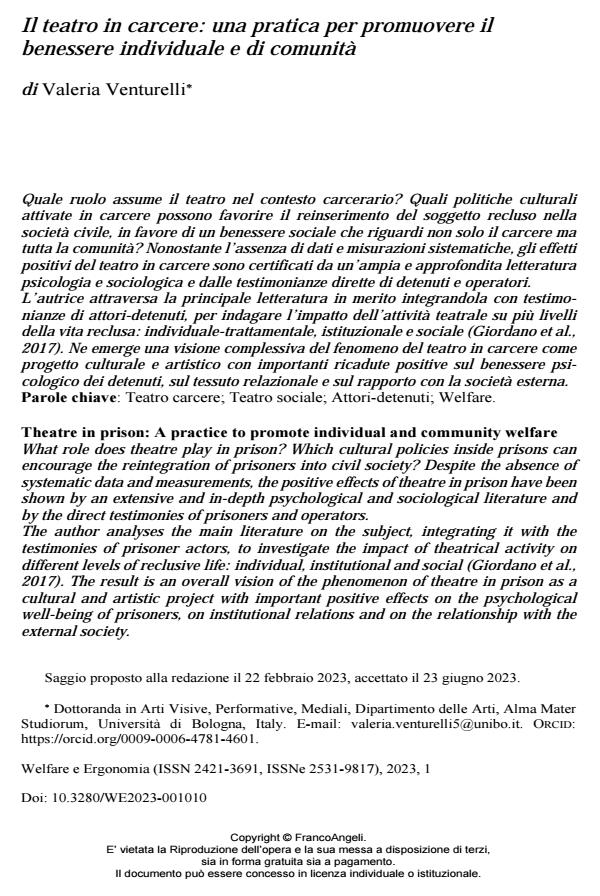Theatre in prison: A practice to promote individual and community welfare
Journal title WELFARE E ERGONOMIA
Author/s Valeria Venturelli
Publishing Year 2023 Issue 2023/1
Language Italian Pages 11 P. 143-153 File size 296 KB
DOI 10.3280/WE2023-001012
DOI is like a bar code for intellectual property: to have more infomation
click here
Below, you can see the article first page
If you want to buy this article in PDF format, you can do it, following the instructions to buy download credits

FrancoAngeli is member of Publishers International Linking Association, Inc (PILA), a not-for-profit association which run the CrossRef service enabling links to and from online scholarly content.
What role does theatre play in prison? Which cultural policies inside prisons can encourage the reintegration of prisoners into civil society? Despite the absence of systematic data and measurements, the positive effects of theatre in prison have been shown by an extensive and in-depth psychological and sociological literature and by the direct testimonies of prisoners and operators. The author analyses the main literature on the subject, integrating it with the testimonies of prisoner actors, to investigate the impact of theatrical activity on different levels of reclusive life: individual, institutional and social (Giordano et al., 2017). The result is an overall vision of the phenomenon of theatre in prison as a cultural and artistic project with important positive effects on the psychological well-being of prisoners, on institutional relations and on the relationship with the external society.
Keywords: Prison theatre; Applied theatre; Social theatre; Welfare.
Valeria Venturelli, Il teatro in carcere: una pratica per promuovere il benessere individuale e di comunità in "WELFARE E ERGONOMIA" 1/2023, pp 143-153, DOI: 10.3280/WE2023-001012